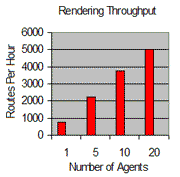The more things change, the more they, uh, you know...
Fewer than one in 10 businesses is planning to adopt grid computing because of concerns about cost, complexity and security, according to a survey of IT managers.It was reported here in Silicon.com, quoting a study done by Vanson Bourne.
The article paraphrases Peter Critchely of Morse, who commissioned the study, saying, "...grid computing is being held back by confusion and myths surrounding the technology."
I was all fired up to write a post about how needless complexity is what has been holding back grid computing for quite a while...and then I remembered that I already wrote that post. Last September. I wrote about how, at Digipede, we felt that addressing complexity issues was our top priority.
We concentrated on ease-of-use in every phase of the product--from how it would be sold, how it would be installed, how developers can work with it, and how it would work for people who have never written a line of code in their lives.

In the intervening 9 months, we've been able to show that grid computing doesn't have to be difficult. There's the bazillion dollar investment fund that ported their trading analysis software faster than their lawyers could examine a license agreement (case study here). There's the media company that took a CPU-starved, multi-threaded application that was threatening to choke their server, and in just a few days had it running on 20 machines on their network (case study here). There are companies scaling their web applications. There are biologists doing complex genetic analysis. There's even weather simulation. All of it happening by doing "grid computing."
And how many clients have we visited? Zero. Nada. Zilch. Oh, sure, Rob and John went to Universal Studios with one client, but that was really for the Mummy ride, not to discuss intricacies of grid computing.
So how have we been able to help our customers if we aren't holding their hands? Simple: our product is radically easier to BILU.
Today, we made it even easier to try out. Today we announced our free Digipede Network Developer Edition. What is the developer edition? It's a fully-functional, full-featured version of our product. It lets any developer working on a Microsoft platform check out the Digipede Network up close and personal. Run our samples. Run your own code. Play with it. We want more developers to experience what our customers already have: Grid computing doesn't have to be hard.
To download the Digipede Network Developer Edition, go here.




